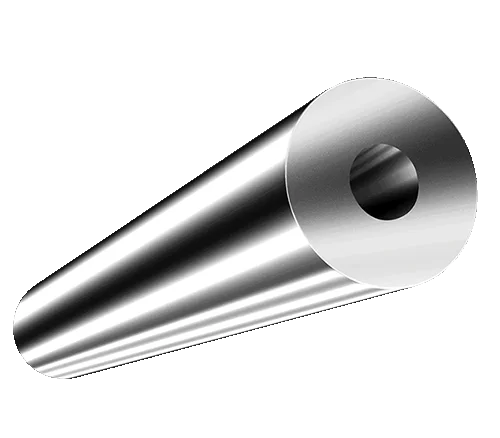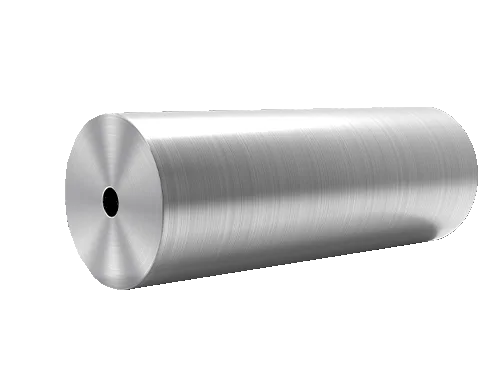Shandong Qilu lndustrial Co.,Ltd.
How Hollow Tube Forging Enhances Component Quality
Introduction

Hollow tube forging has emerged as a pivotal technique in enhancing component quality across various industries. By leveraging the inherent advantages of this forging method, manufacturers can achieve superior strength, precision, and efficiency in producing critical components. In this blog post, we delve into the intricacies of hollow tube forging and elucidate how it elevates the quality standards of engineered parts.
Understanding Hollow Tube Forging
Hollow tube forging, also known as seamless ring rolling, entails the shaping of a hollow, cylindrical workpiece into a desired form through controlled deformation under high pressure and temperature. This process involves the continuous reduction of the cross-sectional area, resulting in a seamless and structurally sound component. Key factors influencing the success of hollow pipe forging include material selection, temperature management, and die design.
Material Selection
Choosing the appropriate material is paramount in hollow pipe forging to ensure optimal mechanical properties and performance characteristics. Alloys with high ductility and thermal stability are preferred for forging applications, enabling the seamless formation of intricate geometries without compromising structural integrity.
Temperature Management
Maintaining precise temperature control throughout the forging process is crucial for achieving homogeneous deformation and minimizing material defects. By carefully regulating heating and cooling rates, manufacturers can mitigate the risk of thermal cracking and achieve uniform grain structures, enhancing the mechanical properties of the forged component.
Die Design
The design of forging dies plays a pivotal role in determining the final shape and dimensional accuracy of the forged part. Complex geometries and internal features can be seamlessly integrated into the component through innovative die designs, facilitating the production of intricate and high-performance components.
Advantages of Hollow Tube Forging
Hollow tube forging offers a myriad of advantages over conventional manufacturing processes, making it the preferred choice for producing critical components in aerospace, automotive, and industrial applications. Some notable benefits include:
- Enhanced Strength and Durability: The inherent grain refinement and uniform microstructure achieved through hollow pipe forging result in superior mechanical properties, including enhanced tensile strength, fatigue resistance, and impact toughness.
- Improved Dimensional Accuracy: The seamless forming process of hollow pipe forging ensures precise control over the final dimensions of the component, eliminating the need for secondary machining operations and reducing material wastage.
- Cost Efficiency: By minimizing material waste and streamlining production workflows, hollow pipe forging offers cost-effective solutions for manufacturing complex components with tight tolerances.
Application of Hollow Tube Forging
Hollow tube forging finds widespread application across various industries, serving as a cornerstone for the production of critical components such as:
Aerospace Engine Components:Hollow pipe forging is pivotal in crafting engine parts like turbine discs and shafts for aircraft. It allows for intricate internal structures, enhancing performance while reducing weight.
Automotive Transmission Parts:For automobiles, hollow pipe forging produces gears and shafts vital for smooth transmission operation. This process improves durability and fuel efficiency.
Industrial Bearings and Gears:Industrial machinery relies on bearings and gears forged with high precision and strength. Hollow pipe forging ensures superior wear resistance and dimensional stability.
Oil and Gas Drill Bits:In oil drilling, hollow pipe forging creates durable drill bits that withstand extreme conditions, enhancing drilling efficiency and longevity.
Medical Implants:For medical implants like hip stems and bone plates, hollow tube forging ensures biocompatibility and long-term stability within the body.
Case Study: Hollow Tube Forging in Aerospace Manufacturing
To illustrate the efficacy of hollow tube forging in real-world applications, let’s consider its utilization in aerospace manufacturing. The production of turbine discs for jet engines exemplifies the intricate geometries and stringent performance requirements that can be met through hollow pipe forging. By seamlessly integrating internal cooling channels and optimizing material properties, hollow pipe forging enables the fabrication of lightweight yet robust components that withstand extreme operating conditions.
Advantages of hollow tube forging compared to traditional forging methods:

| Advantages of Hollow Tube Forging | Hollow Tube Forging | Conventional Forging |
|---|---|---|
| Material Utilization | High | Moderate |
| Dimensional Accuracy | Excellent | Good |
| Internal Complexity | Easy integration | Limited feasibility |
| Production Efficiency | Streamlined process | Additional machining |
| Cost Effectiveness | Reduced waste | Higher material and labor costs |
Conclusion
In conclusion, hollow tube forging stands as a testament to the ingenuity and precision achievable in modern manufacturing processes. By harnessing the benefits of seamless ring rolling, manufacturers can elevate the quality standards of engineered components while enhancing efficiency and cost-effectiveness. As industries continue to evolve, the versatility and reliability of hollow pipe forging are poised to play an increasingly pivotal role in shaping the future of advanced manufacturing.
FAQ
Q: What materials are suitable for hollow tube forging?
A: Alloy steels, stainless steels, titanium, and nickel-based alloys are commonly used materials for hollow tube forging due to their excellent mechanical properties and forgeability.
Q: How does hollow tube forging compare to other forging methods?
A: Hollow tube forging offers distinct advantages over traditional forging methods, including improved material utilization, enhanced dimensional accuracy, and the ability to produce complex internal geometries without secondary machining.
Q: What are the limitations of hollow tube forging?
A: While hollow tube forging excels in producing seamless components with superior mechanical properties, it may pose challenges in forming extremely large or irregularly shaped parts due to die constraints and material flow considerations.
